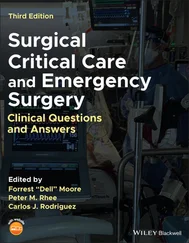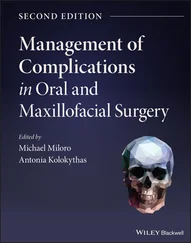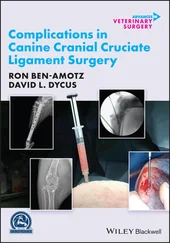Temporomandibular joint evaluation
General Patient Evaluation
Hereditary tendencies in the development of dentofacial deformities
The term dentofacial deformity is generally used to describe a significant disproportion of the jaws in association with malocclusion. Jaw deformities are thought to be more common among individuals with genetic backgrounds that are crossed between different racial and ethnic groups as compared with those from isolated human populations. It is assumed that about one-third of children who present with a severe Class III malocclusion will have a parent with the same problem and that one-sixth of these children will have siblings with the same problem. A short face growth pattern with a deep bite malocclusion is more frequently found in Caucasians, while bimaxillary protrusion with anterior open bite and microgenia is more prevalent among individuals of African descent.
Knowledge and an understanding of normal facial growth and development as well as the effect of malformations on associated facial structures is useful in diagnosis and treatment planning as well as to limit complications during treatment. Factors that are known to alter facial growth and cause dental malocclusion and skeletal deformities may include the following: (1) syndromes, (2) hereditary factors, (3) environmental and neuromotor effects, (4) trauma, and (5) pathology (eg, tumors).
Medical history
The patient’s medical history can be obtained by means of a questionnaire that the patient fills out at the first consultation. The questionnaire should be thorough so that no important areas are overlooked. The data are used to focus follow-up questions. Existing medical problems must be further evaluated and discussed with the appropriate physician or specialist. The potential for these medical problems to complicate general anesthesia or reconstructive surgery must be evaluated. Risk management and potential complications related to any medical problem should be discussed with the patient and carefully documented. Other medical specialists treating the patient should be consulted as necessary, and reports on existing conditions and drugs the patient may be taking should be obtained. It is also important to look for and recognize congenital syndromes because these patients may have unusual growth patterns and may respond unpredictably to orthodontic or surgical treatment.
Dental evaluation
History
Previous restorative, orthodontic, orthognathic surgery, periodontal, and facial pain treatment should be reviewed. The dental history is often an important barometer of the patient’s probable commitment to future treatment.
General evaluation
Oral hygiene and previous dental treatment are good indications of the patient’s “dental IQ” and motivation for future treatment. Caries, periodontal and periapical pathology, and the presence of unerupted and/or impacted teeth should be noted. The need for implants should be evaluated for possible inclusion in the final treatment plan. However, final prosthetic decisions are deferred until surgical orthodontic treatment has been completed.
Periodontal considerations
The prognosis for any periodontally affected teeth is established and the effect of orthodontic and surgical treatment considered. Periodontal disease and inadequately attached gingiva must be managed before commencement of orthodontic treatment. Long-term management, further periodontal treatment, and prognosis should be discussed with the periodontist and the patient.
Occlusal–oral function evaluation
Mastication, swallowing, mouth breathing, modified eating habits, and maximum mouth opening are documented. Snoring and breathing during sleep (eg, obstructive sleep apnea) should be noted and investigated. The effect of the dentofacial deformities on speech should be noted and the patient referred for pretreatment speech evaluation. Tongue thrust, thumbsucking, and lip-biting habits should be noted and their effect on the deformity evaluated.
Sociopsychologic Evaluation
Evaluation of the patient’s sociopsychologic makeup is often neglected. It is important to consider the patient’s motives for treatment and to determine the patient’s expectations from treatment. There are two basic causes of patient dissatisfaction with the treatment outcome: (1) failure of the clinician to clearly inform the patient of realistic and probable treatment results (especially esthetic results), and (2) overoptimistic expectations of the patient regarding the results of treatment.
At the first consultation, the patient should be introduced to the concept of orthognathic surgery gently but confidently. It is imperative that from the start, the clinician provides the patient with a realistic and understandable overview of orthognathic treatment principles and general treatment possibilities in relation to the patient’s specific dentofacial problem. Understanding the patient’s concerns, motivations, and expectations will provide insight into the patient’s psychologic health.
The clinician should refrain from overwhelming the patient with overt enthusiasm about the benefits of treatment, but rather should allow the patient to make his or her own decision. Some patients may need time to discuss future treatment with family or friends. Further counseling about realistic treatment expectations may be necessary, and it may even be best to delay treatment until the patient seeks psychologic guidance and is able to cope with treatment realities.
The perception of one’s own appearance is often the “motor” behind direction in life. Surgical-orthodontic change of facial appearance inevitably has an effect on this motor. The following are some relevant questions for the patient to consider:
What does the patient (and/or the patient’s parents) think is wrong? Many individuals are able to identify, explain, and prioritize their concerns, which may vary from functional to esthetic problems. A patient is often referred by his or her dentist for treatment for conditions unfamiliar to the patient or family. The patient may be seen by the dentist not because of their own concerns but those of their parents. For these patients, it is paramount to explain their specific problems and the reasons for correction, including the risks of nontreatment, the treatment required, and the associated risks of treatment. It may come as a shock to the patient and family members that the patient may need surgery. It is therefore important to comprehensively discuss with the patient (and family when necessary) the concepts related to surgery combined with orthodontic treatment. The advantages and disadvantages of combining orthodontics with surgery, alternative treatments, and compromises should be discussed; if possible, results from previously treated patients should be reviewed. This information will help the patient and family to make an informed decision regarding treatment.
Why is treatment required? The motivation for treatment is often a good predictor for the patient’s cooperation during treatment.
Why is treatment required now? The timing of seeking treatment is influenced by various factors including finances, onset of symptoms, and late diagnosis, among others.
What is expected from treatment? The expectations and priorities of patients differ. For patients with severe facial deformities, the esthetic change is more important than functional occlusal correction. Patients who need correction of their malocclusion but prefer not to have any esthetic facial change can present a treatment challenge to the surgeon and the orthodontist.
Figure 2-1 shows a sociopsychologic evaluation form, which should give the clinician an overview of the patient’s sociopsychologic status, indicating any existing problems and possible need for consultation with a psychologist.
Читать дальше












